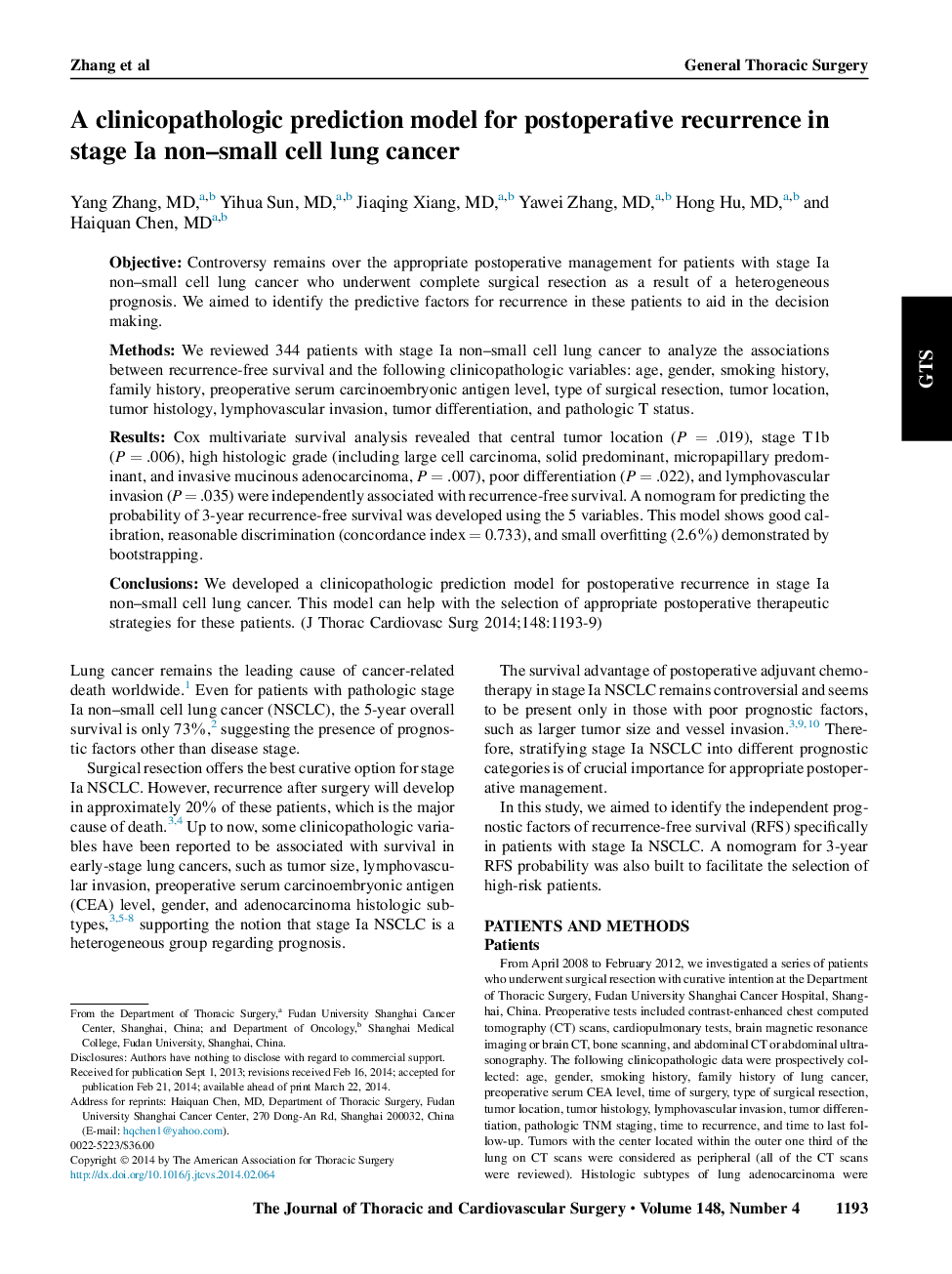| Article ID | Journal | Published Year | Pages | File Type |
|---|---|---|---|---|
| 2980361 | The Journal of Thoracic and Cardiovascular Surgery | 2014 | 7 Pages |
ObjectiveControversy remains over the appropriate postoperative management for patients with stage Ia non–small cell lung cancer who underwent complete surgical resection as a result of a heterogeneous prognosis. We aimed to identify the predictive factors for recurrence in these patients to aid in the decision making.MethodsWe reviewed 344 patients with stage Ia non–small cell lung cancer to analyze the associations between recurrence-free survival and the following clinicopathologic variables: age, gender, smoking history, family history, preoperative serum carcinoembryonic antigen level, type of surgical resection, tumor location, tumor histology, lymphovascular invasion, tumor differentiation, and pathologic T status.ResultsCox multivariate survival analysis revealed that central tumor location (P = .019), stage T1b (P = .006), high histologic grade (including large cell carcinoma, solid predominant, micropapillary predominant, and invasive mucinous adenocarcinoma, P = .007), poor differentiation (P = .022), and lymphovascular invasion (P = .035) were independently associated with recurrence-free survival. A nomogram for predicting the probability of 3-year recurrence-free survival was developed using the 5 variables. This model shows good calibration, reasonable discrimination (concordance index = 0.733), and small overfitting (2.6%) demonstrated by bootstrapping.ConclusionsWe developed a clinicopathologic prediction model for postoperative recurrence in stage Ia non–small cell lung cancer. This model can help with the selection of appropriate postoperative therapeutic strategies for these patients.
